Almost every picture I see of Japanese aircrew, they appear to wearing quilted / padded clothing with huge great furry collars. So did the aircraft at the time have heaters or ducts to take warm air from the engine / exhaust areas ?...did they have the luxury of electrically heated clothing...or did they just sit there and get cold ?
Navigation
Install the app
How to install the app on iOS
Follow along with the video below to see how to install our site as a web app on your home screen.
Note: This feature may not be available in some browsers.
More options
You are using an out of date browser. It may not display this or other websites correctly.
You should upgrade or use an alternative browser.
You should upgrade or use an alternative browser.
Did Japanese WW2 aircraft have heaters / hot air ducts ?
- Thread starter Geedee
- Start date
Ad: This forum contains affiliate links to products on Amazon and eBay. More information in Terms and rules
More options
Who Replied?GrauGeist
Generalfeldmarschall zur Luftschiff Abteilung
I recall reading that the A6M did have the provision for electric heaters at the cockpit intakes, but it was not a standard.
Attachments
-
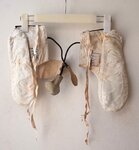 i-img773x837-1597812930g9kjqo2598410.jpg115 KB · Views: 195
i-img773x837-1597812930g9kjqo2598410.jpg115 KB · Views: 195 -
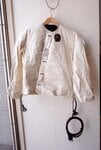 i-img775x1153-1597812930or2eha2598410.jpg133.5 KB · Views: 163
i-img775x1153-1597812930or2eha2598410.jpg133.5 KB · Views: 163 -
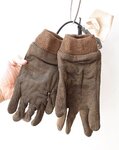 i-img779x985-1597812930szrcyf2598410.jpg136 KB · Views: 159
i-img779x985-1597812930szrcyf2598410.jpg136 KB · Views: 159 -
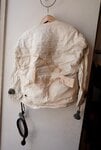 i-img791x1178-1597812930epicpr2598410.jpg117.6 KB · Views: 191
i-img791x1178-1597812930epicpr2598410.jpg117.6 KB · Views: 191 -
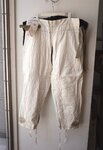 i-img820x1200-1597812930ort1zc2598410.jpg128.3 KB · Views: 169
i-img820x1200-1597812930ort1zc2598410.jpg128.3 KB · Views: 169 -
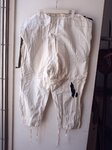 i-img821x1103-1597812930ic8xit2598410.jpg135.1 KB · Views: 170
i-img821x1103-1597812930ic8xit2598410.jpg135.1 KB · Views: 170 -
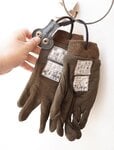 i-img831x1095-1597812930gjjhhw2598410.jpg144.6 KB · Views: 173
i-img831x1095-1597812930gjjhhw2598410.jpg144.6 KB · Views: 173 -
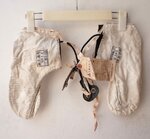 i-img872x805-1597812930scg4772598410.jpg135.7 KB · Views: 173
i-img872x805-1597812930scg4772598410.jpg135.7 KB · Views: 173 -
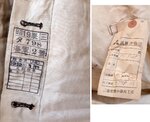 i-img1163x941-15978129304vl9qk2598410.jpg246.2 KB · Views: 185
i-img1163x941-15978129304vl9qk2598410.jpg246.2 KB · Views: 185
johnny1000
Recruit
- 6
- Jul 21, 2016
I don't know the answer to this, but considering Zeros typically didn't even have radios to save weight, it would follow that heating might not have been a top priority.Almost every picture I see of Japanese aircrew, they appear to wearing quilted / padded clothing with huge great furry collars. So did the aircraft at the time have heaters or ducts to take warm air from the engine / exhaust areas ?...did they have the luxury of electrically heated clothing...or did they just sit there and get cold ?
Shinpachi-san, Tsugoi!To wear or not depended on individual.
View attachment 604873
Source: 昭和19年 旧日本軍海軍 電熱航空被服 セット 電... - ヤフオク!
GrauGeist
Generalfeldmarschall zur Luftschiff Abteilung
In the south Pacific and South-east Asia, heaters weren't really needed.I don't know the answer to this, but considering Zeros typically didn't even have radios to save weight, it would follow that heating might not have been a top priority.
In the Aleutians, northern China/Mongolia, Burma and Korea, then yes, they would have been nessecary during the winter months.
MiTasol
Captain
I don't know the answer to this, but considering Zeros typically didn't even have radios to save weight, it would follow that heating might not have been a top priority.
Those heated flying suits look far lighter and the freedom of movement they would provide would definitely be a bonus so I would expect them to be very much a top priority in sub 0C operations.
Is is much colder at altitude, even at the equator, and warplanes tended to cruise long distances at around 20,000 feet or so. However, I was not able to quickly find the average temperature at 20,000 above the equator. Some additional research is called for.In the south Pacific and South-east Asia, heaters weren't really needed.
In the Aleutians, northern China/Mongolia, Burma and Korea, then yes, they would have been nessecary during the winter months.
warbirdperformance
Airman
I don't know the details but at least G4M and P1Y have heaters using exhaust.
Shortround6
Lieutenant General
I don't know when things got standardized but a chart from a 1943 book has the standard altitude temperature and a 'typical of several' hot-day standards in use on the same chart.
standard altitude temperature starts at 59 degrees F at 0 ft and drops steadily to about -66/67 degrees F at 35-36,000ft.
The Hot day curve uses starts at 100 Degrees F at 0ft and hold it to about 6,000ft and then steadily drops to about -25/28 degrees at 35,000ft.
Standard temp at 20,000ft was about -15 degrees F and for the hot day it was about 40 degrees F (about 8 degrees F above freezing or 4.5-5 degrees C) )
Old American book and I am not going to convert numbers on a chart/graph to celsius.
standard altitude temperature starts at 59 degrees F at 0 ft and drops steadily to about -66/67 degrees F at 35-36,000ft.
The Hot day curve uses starts at 100 Degrees F at 0ft and hold it to about 6,000ft and then steadily drops to about -25/28 degrees at 35,000ft.
Standard temp at 20,000ft was about -15 degrees F and for the hot day it was about 40 degrees F (about 8 degrees F above freezing or 4.5-5 degrees C) )
Old American book and I am not going to convert numbers on a chart/graph to celsius.
GrauGeist
Generalfeldmarschall zur Luftschiff Abteilung
I am fully aware of the temperature difference at altitude.Is is much colder at altitude, even at the equator, and warplanes tended to cruise long distances at around 20,000 feet or so. However, I was not able to quickly find the average temperature at 20,000 above the equator. Some additional research is called for.
However, we must also consider that a great deal of combat operations in the South Pacific took place at lower altitudes, unlike Europe.
And much like operations in the Mediterranean, fighter pilots in the South Pacific typically wore light clothing (including shorts) which might be a good indication that cockpit heaters may not have been a priority.
No matter how tough your pilots are, they still have to be able to see.
Imagine a pilot cruising at high altitude, and the temp outside is -20 F, you're gonna have a lot of frost on the inside of the windows just from the pilots breath.
I spent some time in Utah, in -20 F weather, in a small pickup with no heater, me and the passenger spent most of our time scrapping small holes in the frost on the inside of the windshield just to see straight ahead. That frost was just from the moisture in our breath meeting the inside of the windows, with -20 F air plus wind chill hitting the outside.
Pretty sure even the weight saving Zero designer had some method of keeping at least the windows clear, even if it didn't do much for the pilot's comfort.
Imagine a pilot cruising at high altitude, and the temp outside is -20 F, you're gonna have a lot of frost on the inside of the windows just from the pilots breath.
I spent some time in Utah, in -20 F weather, in a small pickup with no heater, me and the passenger spent most of our time scrapping small holes in the frost on the inside of the windshield just to see straight ahead. That frost was just from the moisture in our breath meeting the inside of the windows, with -20 F air plus wind chill hitting the outside.
Pretty sure even the weight saving Zero designer had some method of keeping at least the windows clear, even if it didn't do much for the pilot's comfort.
That depends what you call Europe. I had my car water pump frozen off and broken in East Germany when it hit minus 40C on the ground. Russia west of the Urals is considered to be Europe and it was staggeringly cold there in winter. After D-Day Typhoons had to be heated and the engines run through the night in the winter of 1944/45, Europe was a cold place to be.I am fully aware of the temperature difference at altitude.
However, we must also consider that a great deal of combat operations in the South Pacific took place at lower altitudes, unlike Europe.
And much like operations in the Mediterranean, fighter pilots in the South Pacific typically wore light clothing (including shorts) which might be a good indication that cockpit heaters may not have been a priority.
GrauGeist
Generalfeldmarschall zur Luftschiff Abteilung
The combat altitudes in the MTO and PTO were predominantly lower than the altitudes in the ETO.That depends what you call Europe. I had my car water pump frozen off and broken in East Germany when it hit minus 40C on the ground. Russia west of the Urals is considered to be Europe and it was staggeringly cold there in winter. After D-Day Typhoons had to be heated and the engines run through the night in the winter of 1944/45, Europe was a cold place to be.
I know the Aleutians *may* be considered part of the Pacific campaign, so yes, heaters, heavy clothes and such would be mandatory - but in the South Pacific, freezing was not an issue at lower altitudes (or at sea level, for that matter).
EAIAnalog
Airman
Most times when you convert back and forth from Centigrade to Fahrenheit, you don't need a precise answer, just something to give you a good feel for what's being mentioned. I use the following approximation in those cases: F = 2*C + 30 (the exact formula being F = 1.8*C + 32). And its inverse: C = (F -30)/2. Works well enough in the "human habitable" temperature range.
Users who are viewing this thread
Total: 1 (members: 0, guests: 1)
Similar threads
- Replies
- 0
- Views
- 752
